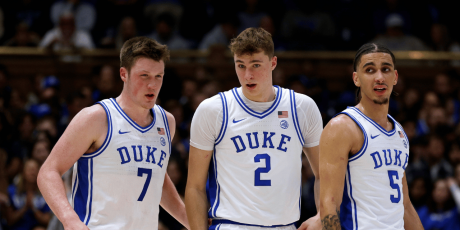A Primer on Understanding the Basics of Dynasty Fantasy Football

For most, fantasy football is synonymous with the redraft format, relying on single-season teams drafted just before the NFL season commences, only to see them dismantled at the end of the season. It’s a great introduction to the hobby but can become less of a challenge over time as players become more knowledgeable. Changes to scoring, lineup configurations, rules and roster sizes can add some spice to a typical league but doesn’t present the same complexities of a dynasty league. Never played in a dynasty league before? Let me explain in this primer...
Dynasty Fantasy Football Primer
What is a Dynasty League?
Unlike a redraft league, which resets rosters every season, a dynasty league offers multi-year ownership of players. Roster sizes tend to be larger, with many exceeding 30 players per team, forcing participants to dig deep and really understand NFL depth charts and mine for sleepers. That also makes trading more important, as waivers tend to have fewer options with immediate benefit, ultimately encouraging more owner interaction. It also makes winning and losing trades a long-term result, creating fantasy player tendencies and rivalries amongst teams.
This is different from a keeper league, which limits the number of players carried over from season to season, usually three to four players. There is no compensation in a dynasty league to keep players either, many keeper leagues have you forfeit the equivalent round in the next redraft to maintain a player, and rosters are kept throughout the season in a dynasty league. However, as you will see below, there are some similarities between keeper leagues and dynasty leagues. For those unfamiliar, here is a more in-depth look at keeper leagues that is also a handy reference for dynasty as well.
What to Consider When Starting a League?
Just like a redraft league, many of the same initial steps apply in order to set up a league. Finding a group of people who are excited and engaged is always key as they are going to be the people you compete against, trade with, and grow the league alongside. Once that is done, agreeing on a rule set including roster sizes, scoring format and lineup settings will set the stage for what many seasoned dynasty players consider the best part of the setup process: The startup draft.
But before we cover that, there is another area to consider prior to starting a league. What happens when a member leaves? Because this is a multi-season format retaining much of the roster every season, replacing someone is more difficult than a standard redraft league. Whoever you find will inherit someone else’s team and could have limited resources to build it the way they choose. A few helpful options:
- Giving the new member an extra draft pick. This can give them a head start, especially if the inherited team is in rough shape.
- Giving the new member a break on Year One fees. If they need to tear down a team, they get a little extra time before they are as heavily invested financially.
- Creating a dispersal draft. This one is unique to dynasty leagues as it gives any other team the chance to rebuild as well, putting all players and picks into a draft pool, along with free agents in some cases, for the participating members to draft from and decide how they want to approach their rebuild. It can help revitalize not just a new member’s team, but anyone who feels like their own team is also stagnating.
How to Approach a Startup Draft?
This is the foundation for a dynasty team, creating the initial roster you will make trades and set lineups from. Over time, this event will have less bearing on your dynasty team as players gain and lose value, get injured, retire, and change fantasy teams based on league activity. However, for new leagues, it can set the tone for several years as to how each team is able to contend. This is a major difference from redraft, where every season is a race to win the title, dynasty leagues will have teams specifically looking two or more years out with rosters unable to compete for a title in the near-term. You also have the ability in many leagues to trade picks during the startup draft, which can further craft how you construct a team. Because of all this, there is a multitude of approaches to a startup draft...
Youth Heavy or Productive Struggle
This is a draft strategy that intentionally forgoes early league contention in an effort to build long-term depth and trade value through a consistent approach of drafting young, upside players. This can also include stockpiling rookie picks if they are included in the startup draft. It will be a frustrating first year with tough lineup decisions and few wins, but a likely high draft pick and a chance for a quick jump to contention in your second season.
Veteran Heavy or Win Now
The opposite of the first approach, this strategy focuses on immediate contributors who will help field a contending team right out of the gate. It doesn’t mean this approach ignores young players but it puts a priority on productivity so it tends to exclude high-priced rookies or generally unproven options, especially in the earlier rounds. Some who subscribe to this approach will also trade away future rookie picks for additional startup value. The downside means a potentially shortened contending window and the need for a rebuild if the talent pipeline isn’t robust.
Balanced or Best Player Available
I group these two together because they tend to go hand-in-hand. It leverages the idea of younger players and productivity without overemphasizing one over the other. This isn’t always the best approach though as it could easily lead to a middling team that scores enough to make the playoffs without the upside or immediate productivity to break through to a championship.
These approaches are not taking into account any strategic consideration to positions, which can vary based on scoring and roster formats. Superflex or 2QB leagues will propel the quarterback position up the rankings, while TE-Premium bumps up scoring to incentivize drafting tight ends sooner. However, in most dynasty drafts, it’s a question of running backs and wide receivers, with the former usually providing short-term high scoring and the latter giving a longer career arc that can be tempting in a multi-season format.
What Does a Dynasty League’s Offseason Look Like?
Unlike redraft, where the NFL season ends, a fantasy title is handed out, and you don’t talk to your league mates until June, a dynasty league is a year-round affair. Some of us don’t want a break and aren’t patient enough to wait six months for fantasy football. Instead, dynasty leagues give plenty to do during the NFL offseason and provide plenty of opportunities to stay immersed in fantasy football.
Startup Draft
This is only at the inception of a dynasty league. In many cases, this takes place in the first few months after the NFL season and keeps the rookies out of the process. As mentioned, this is the basis for a new league and a big reason why many fantasy players join new leagues all the time.
Rookie Draft
This happens every year to allocate the new class of NFL players. Usually, the order is determined like in the NFL, by the previous season’s order of finish. Most leagues also like to do this after the NFL Draft, but there are unique challenges in picking rookies before knowing their NFL landing spot (and draft round) as well. You can also trade current and future rookie picks as part of any deal and they become more valuable as the league’s draft day draws closer.
Veteran Free Agents
At the end of every dynasty fantasy season, waivers will close but that doesn’t mean there aren’t players out there who will be desirable as the offseason commences. Some dynasty leagues will include free agents as part of the rookie draft while others hold an entirely separate draft to add them to dynasty teams. Either way, there will inevitably be risers who aren’t rostered every offseason.
Offseason Trading
One of the best parts of dynasty is the high level of activity that exists all year with trading being among the brightest spots. Other than a brief period leading up to and including the fantasy playoffs, most leagues leave trading open all year. With free agency, the NFL Draft, and other offseason events impacting player value, it can be a key way to make quick changes before the next fantasy season.
Dispersal Drafts, Re-Signing Players and Devy Drafts
There are many variations in dynasty, making some of these activities part of the offseason. Here’s a quick look at each:
- Dispersal Draft – This allows for teams to volunteer for a draft that puts their players and picks into a pool that may include free agents and any other participating rosters. It can speed up a rebuilding team’s timeline or simply shake up a stagnant roster.
- Re-Signing Players – Reserved for contract leagues, this is a period where expired contracts can be re-signed or risk being bid on by another owner. Some leagues add layers to this process including compensation for lost players (think franchise tags) or utilizing salaries with contracts to simulate the NFL salary cap experience.
- Devy Draft – A growing sector of dynasty football, devy leagues have a separate draft during the offseason for existing college players. This raises the stakes on player evaluation and makes rookie drafts and roster construction an exciting challenge.
What Do I Do First?
Once a group is assembled, rules are created, a timeline is set and startup strategies have been researched, then what? Well, there are a few first steps to get the league going...
Find a Host for the League
There are so many options online these days to host leagues. Some allow more customization than others but it really comes down to what league members are familiar with and what will serve your league best.
Get Those Dues
This is important not just for this year, but also for next year as teams start trading future picks and other key players. Some leagues will think a year ahead and make any team who trades future picks give 50% or more of the next year’s dues. Replacing a league member is easy in redraft but dynasty, as mentioned, requires someone new to inherit a roster. Giving them a break on dues can help if the previous member trades off future picks.
Have Fun!
This is essential. Just like any other league, the real point of fantasy football is to have a good time with a great group of people. Don’t forget that.
Related Articles




















